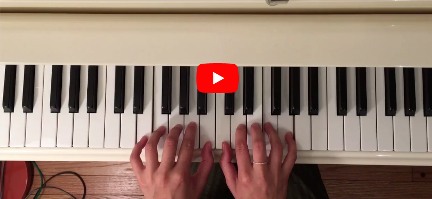Ernő Dohnányi, published in Hungary a book of keyboard exercises in 1929, that was subsequently republished in 1950. It had the catchy title, “Essential Finger exercises for obtaining a sure piano technique.” ISBN: 9790080026526 It contains 40 excellent piano exercises and is available in English
Here is a link to some 'essential Dohnányi exercises' being played for you on You tube:
 Charles Louis Hanon
Charles Louis HanonHanon piano exercises have been meticulously constructed to provide the optimum level of practice for pianists of all levels and abilities. The full series of exercises have a proven track record in improving technical skill, speed and precision stretching back well over a century.
First published in 1873, The Virtuoso Pianist by Charles Louis Hanon has become a valuable source of inspiration for piano teachers, students and performers. The original 60 Hanon exercises have now been perfected and transposed to every major key, offering participants the maximum performance training and practice available.
To gain the utmost benefits from the logical progression of Hanon exercises, it is recommended to practise these piano exercises on a daily basis. In that way, pupils will rapidly notice the difference as their fingers become stronger and far more adept at challenging works and techniques.
A key element of the piano finger exercises is the focus on the daily repetitions of strengthening hands and fingers. The primary idea is to instil independence and flexibility in the performing digits, allowing every pianist's internal virtuoso out onto the musical stage.
Through the focused and concentrated practice of these exercises, all students can attain the fundamentals of superb performance and playing.
With the strength, endurance and general proficiency that piano finger exercises can encourage, it is no surprise that the wonderfully illuminating work of Charles Louis Hanon has remained a primary text for all pianists wishing to improve their entire range of piano playing capabilities.
This web-site:
https://www.hanon-online.com/allows you to download 240 exercise scores free of charge.
You will find links to 5 Hanon sample exercises in the next Reply.
Carl Czerny (1791 - 1857) from Austria.
Carl Czerny (sometimes referred to as Karl; February 21, 1791 (?) to July 15, 1857) was an Austrian pianist, composer and teacher. He is best remembered today for his books of etudes for the piano. Czerny was born in Vienna to a family of Bohemian origin. He was taught piano by his father before taking lessons from Johann Nepomuk Hummel, Antonio Salieri and Ludwig van Beethoven. He was a child prodigy, making his first appearance in public in 1800 playing a Mozart piano concerto.
You can view and acquire some of his scores at this web-site:
http://www.free-scores.com/Download-PDF-Sheet-Music-charles-czerny.htmYou will find links to 2 pdf scores of Czerny's scores, in the next Reply.
Peter